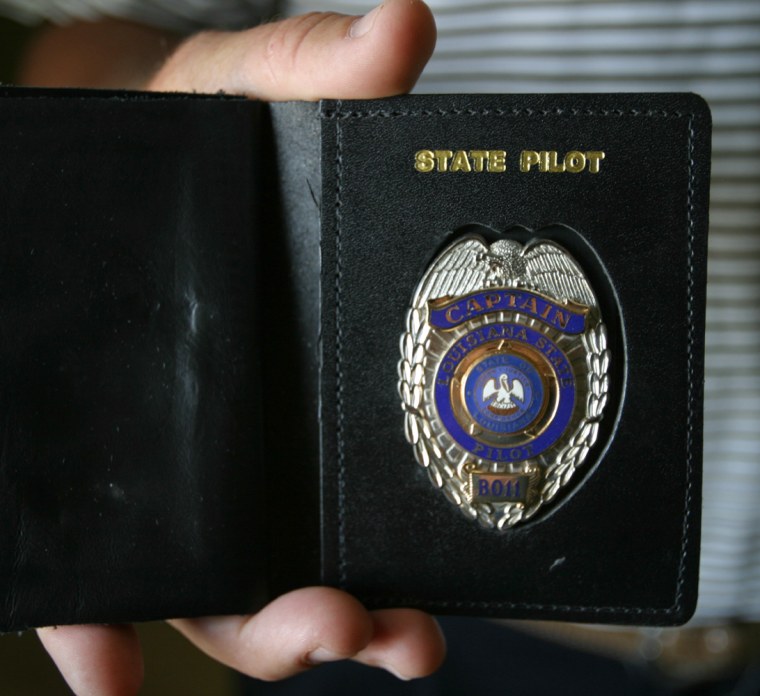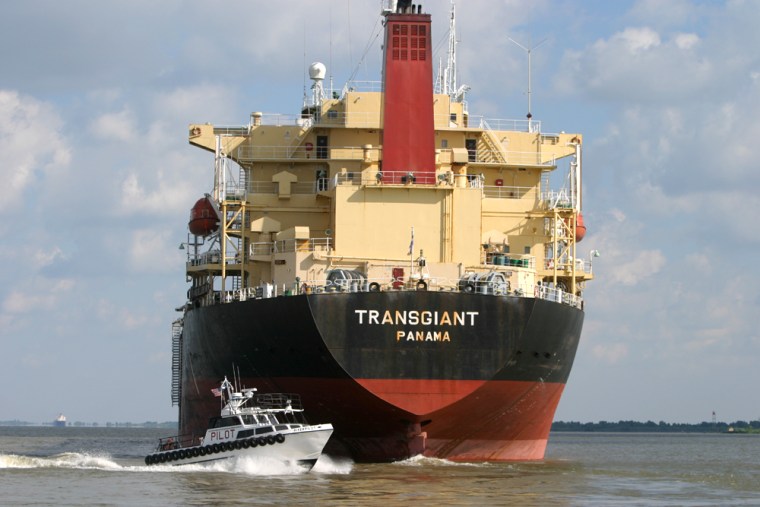Since Sept. 11, port authorities, ship operators and federal officials have been working to tighten maritime security to prevent a terrorist attack from crippling the transportation system that moves the vast bulk of goods in and out of the United States. That effort has included the Mississippi River, the 1,250-mile-long waterborne highway that moves hundreds of millions of tons of cargo throughout the nation’s heartland.
But for all the effort and money expended, industry experts, government officials and private analysts say there is much more work to be done to prevent a terrorist attack involving the waterway.
“There are many, many holes and with all that work there’s a million different ways that (security measures) could be circumvented,” according to Michael Titone, president of the Mississippi River Maritime Association.
One of the most vulnerable stretches of U.S. waters lies at the bottom of the nation’s biggest river. The 255-mile stretch of river from the Gulf of Mexico to Baton Rouge, La., includes the Port of New Orleans. It's also home to five port authorities that oversee deep draft vessels transporting goods to and from the rest of the world.
Tracking cargo and crews
As of July 1, like all U.S. ports, the lower Mississippi is subject to strict new regulations that help Coast Guard and Customs officials monitor ship traffic, determine the origins and destinations of vessels and crew members and closely track the contents of each ship. Ships are required to give a 96-hour notification before docking; ship security officers must present documentation for cargo and crew, and suspicious ships are subject to boarding and search by the Coast Guard.
Millions of dollars have been spent to tighten physical access to port facilities and install closed circuit cameras and other high-tech equipment to monitor maritime traffic. By January, for example, New Orleans will be one of the first U.S. ports to get a new computerized system that will track vessels on the lower Mississippi via transponders much the way air traffic controllers monitor jetliners.
But the scale and complexity of the Mississippi present unique security challenges. One major goal of the new regulations, for example, is to tighten inspection of the 40-foot-long steel boxes that have become the standard container for much of the world’s cargo. But on the Mississippi, where much of what’s shipped is bulk cargo like petroleum or grain, one of the biggest threats is the nearly 200,000 crewmen who operate the 6000 ships that enter and leave New Orleans every year, said Titone.
A simple attack most likely
“The bulk tankers really operate on a slim budget,” he said. “So the tankers are the older vessels, and they’re the kind of people that would go to the cheapest area in the world to hire the least expensive crew. And a lot of those areas are high-risk areas to the U.S.”
Some of those tankers haul dangerous cargo — like petroleum or ammonium nitrate — that could be used to create a giant waterborne bomb. But security experts say the Mississippi is vulnerable to a much simpler form of attack. For instance, sinking a large vessel in a busy channel could block the flow of goods for weeks or months, dealing a serious blow to the U.S. economy.

“It would be easier to block (the ports of) Seattle, Long Beach and San Francisco on the same day than it would be to do what they’ve already done,” said Richard Fairbanks, president of the American Salvage Association, whose members would be called up on to remove such sunken vessels.
Removing a sunken ship can involve cutting the vessel into pieces small enough to be hauled by crane, said Fairbanks. On the Mississippi, that effort would be made even more difficult by the river’s murky, swift-moving water.
“Hopefully you can do the job in six months, but sometimes they take years,” he said.
It's not clear whether the salvage industry has enough equipment and trained personnel to deal with a large-scale terrorist attack. A recent report on the subject by the government-sponsored Marine Board recommended that the Navy inventory marine salvage capacity across the nation to see if the industry could respond effectively to an attack.
Two waterways
For maritime shippers, the Mississippi River is really two distinct waterways. North of Baton Rouge, the shallow-draft barge and towboat operators move bulk cargo along that stretch of the river. These operators and facilities don’t fall under the new regulations for deep-water ports.
For the most part, these barges and tugs are owned by U.S. companies and manned by U.S. crews. That’s why security efforts have focused on restricting access to shipping terminals and other facilities along the waterway, according to Amy Brandt, manager of government affairs for the American Waterways Operators, a trade group for the tugboat and barge industry.
“We’re definitely concerned with vessels being used as weapons,” she said. “Addressing that issue is the heart of our security plan. To address those concerns ,we’ve increased measures for monitoring and access controls to make sure that those folks that shouldn’t be boarding vessels aren’t boarding vessels.”
As access to ports and waterways has been tightened, some port workers have expressed concerns about the screening of workers who enter port facilities but may not board ships. At a hearing on Capitol Hill in June, Michael Mitre, directory of security for the Longshoremen’s union at the Port of Los Angeles, said security could be improved with tighter screening of all those who enter and leave port facilities, including truck drivers.
“Truckers are the largest single occupational group that works on the terminals today,” Mitre testified. “Access is granted with little authenticity of identify and virtually no inspection of the sleeper cabs of the trucks. When a trucker comes in, he may have to show ID, but no one ever looks inside the truck.”
The Transportation Security Administration is working on a pilot program to develop a common transportation worker identification credential that would be required for a wide variety of transportation workers. But a decision on whether to implement that program is not expected before next year.
Despite the numerous new layers of security, many of the new regulations are designed to intercept dangerous cargo or stowaways headed into the United States. Less attention has been paid to outbound shipments, Rep. Richard Baker, R-La., said at the June hearing.
“Anybody can get in (the Mississippi) River at any point and go south,” he said. “I’m not worried about what’s coming up the river form New Orleans. I’m worried what comes down the river from the rest of the nation.”
Enlisting the locals
To help counter that threat, the Coast Guard has established a River Watch program to enlist people who live along the river to report suspicious activity.
"There are large expanses of river system where there’s really little to no infrastructure until you get to major cities,” said Capt. Frank M. Paskewich Jr., who recently took over as commanding officer of the Coast Guard Marine Safety Office in New Orleans, which monitors the river from the Gulf of Mexico to the Arkansas state line. “We have Coast Guard units located up and down the river which are responsible for different portions of the river. And they work together with local, state and federal agencies to leverage resources.”
But the resources devoted so far to maritime security pale in comparison to those devoted to securing U.S. aviation. Since Sept. 11, 2001, some $12 billion has been spent to secure the skies; just $500 million has been spent on maritime security. The vast majority of the $22 billion collected last year in customs duties, excise taxes and users fees went to pay for other federal spending programs.
“Until a ship is used to wreak havoc, I think it’s going to be very hard to actually peel off the type and amount of funds that’s going to be necessary to truly make a difference,” said Titone. “It would take a tremendous amount of money. I don’t think that anyone would have the will to really shore it up until something happens that makes it a political necessity.”
